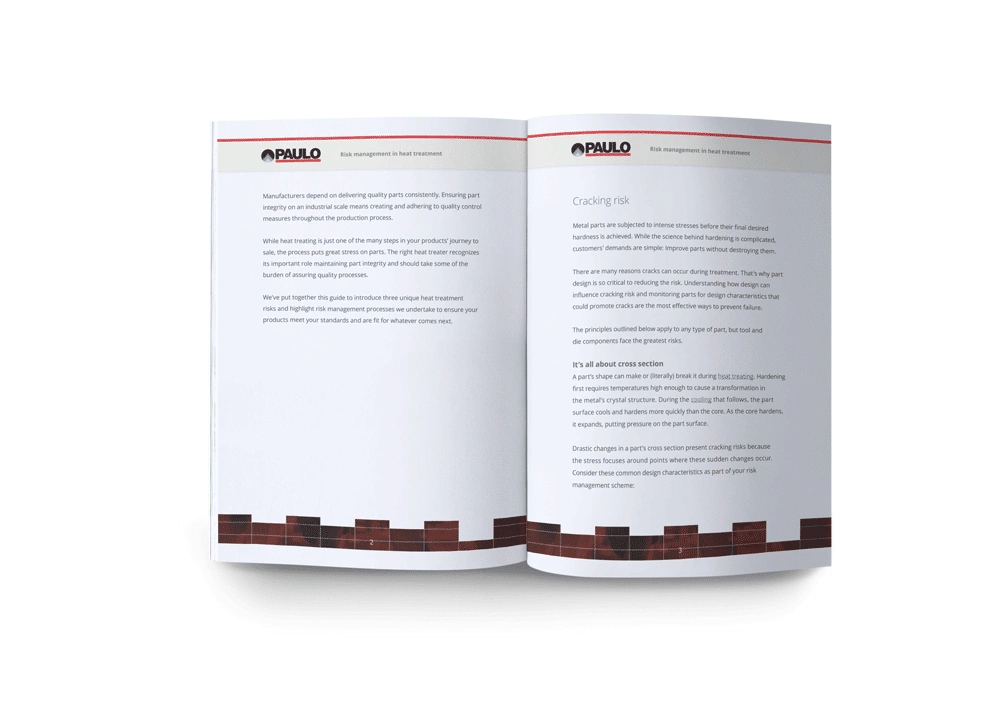Manufacturers depend on delivering quality parts consistently. Ensuring part integrity on an industrial scale means creating and adhering to quality control measures throughout the production process.
While heat treating is just one of the many steps in your products’ journey to sale, the process puts great stress on parts. The right heat treater recognizes its important role maintaining part integrity and should take some of the burden of assuring quality processes.
We’ve put together this guide to introduce three unique heat treatment risks and highlight risk management processes we undertake to ensure your products meet your standards and are fit for whatever comes next.
Part 1
Cracking Risk
Part 2
Heat Treat Scale
Part 3
Decarburization in Steel
Part 4
Partners in Risk Management

In this guide, we discuss:
- Some common risks associated with heat treatment processes.
- The techniques heat treaters use to combat those risks.
- Strategies managers can use to reduce heat treatment risk ahead of time.
- Paulo’s state-of-the-art heat treating process control system.
Complete the form above to receive the guide.



